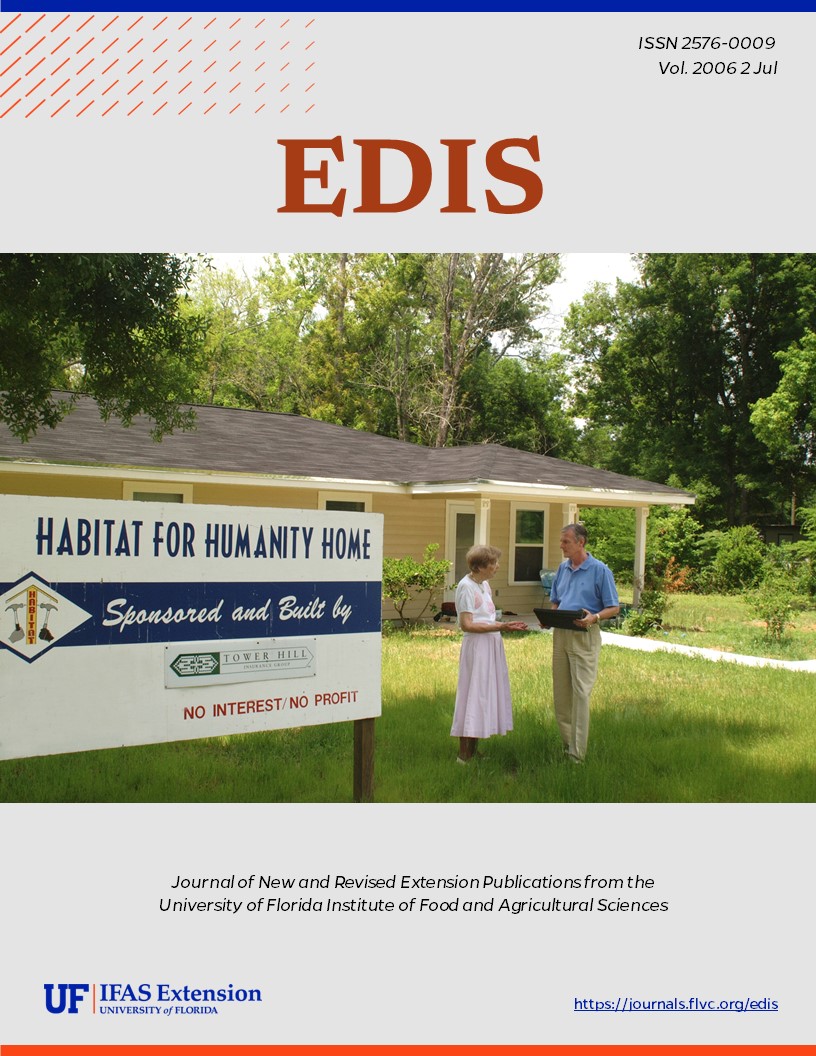Abstract
If picked at the proper mature-green stage and handled properly, tomatoes will ripen to excellent edible quality. Proper postharvest handling of Florida tomatoes is critical to ensure the continued competitiveness of Florida growers.This publication focuses on round and roma (plum) tomatoes since these types are handled similarly under commercial conditions. This document is SS-VEC-928, one of a series of the Horticultural Sciences Department, UF/IFAS Extension. Original publication date August 1, 1989. Revised November 3, 2005.
References
Cantwell, M.I. and R.F. Kasmire. 2002. Postharvest Handling Systems: Fruit Vegetables. In, Postharvest Technology of Horticultural Crops. A.A. Kader (Ed.). Publ. 3311. Univ. Calif. Div. Agric. Natural Resources, Berkeley.
Florida Tomato Committee. 2004. Handling Regulations. Regulatory Bulletin No. 1. Sept. 2004. http://www.floridatomatoes.org.
Gross, K.C., C.Y. Wang and M. Saltveit (Eds.). 2004. The Commercial Storage of Fruits, Vegetables, and Florist and Nursery Stock. USDA, ARS, Agricultural Hdbk. 66. Washington DC. http://www.ba.ars.usda.gov/hb66/.
Mahovic, M.J., S.A. Sargent, and J.A. Bartz. 2004. Identifying and Controlling Postharvest Tomato Diseases in Florida. Publ. HS866. Horticultural Sciences Department, Florida Cooperative Extension Service, University of Florida/IFAS, Gainesville. http://edis.ifas.ufl.edu/HS131.
Olsen S.M. and Simonne E.(eds). 2004. Vegetable Production Handbook for Florida 2004-2005.UF IFAS Extension and Citrus and Vegetable Magazine, Vance Publishing, Lenexa, KS.
Olson, S.M. 2004. Physiological, nutritional, and other disorders of tomato fruit. HS-954 Horticultural Sciences Dept., Florida Cooperative Extension Service, University of Florida/IFAS. Gainesville. http://edis.ifas.ufl.edu/HS200 https://doi.org/10.32473/edis-hs200-2004
Ritenour, M.A., S.A. Sargent, and J.A. Bartz. 2002. Chlorine Use in Produce Packing Lines. Publ. HS-761. Horticultural Sciences Department, Florida Cooperative Extension Service, University of Florida/IFAS, Gainesville. http://edis.ifas.ufl.edu/CH160 https://doi.org/10.32473/edis-ch160-2002
Saltveit, M.E. 2003. Mature Fruit Vegetables. In, Postharvest Physiology and Pathology of Vegetables. J.A. Bartz and J.K. Brecht (Eds.). Marcel Dekker, New York. https://doi.org/10.1201/9780203910092.ch27
Sargent, S.A., M.A. Ritenour, and J.K. Brecht. 2003. Handling, Cooling and Sanitation Techniques for Maintaining Postharvest Quality. Publ. HS719. In, The Vegetable Production Guide for Florida. S.M. Olson and E.H. Simonne (Eds.). Horticultural Sciences Department, Florida Cooperative Extension Service, University of Florida/IFAS, Gainesville. http://edis.ifas.ufl.edu/BODY_CV115.
Sherman, M. and D.D. Gull. 1981. A Flow-Through System for Introducing Ethylene in Tomato Ripening Rooms. Vegetable Crops Fact Sheet, VC-30, University of Florida/IFAS, Gainesville, FL 32611.
U.S.D.A. 1991. United States Standards for Grades of Fresh Tomatoes. U.S. Dept. Agric./AMS, Washington, DC. http://www.ams.usda.gov/standards/vegfm.htm.
U.S. Dept. of Health and Human Services. Center for Food Safety and Applied Nutrition. 1998. Guide to Minimize Microbial Food Safety Hazards for Fresh Fruits and Vegetables. Washington DC. http://www.foodsafety.gov/%7Edms/prodguid.html
U.S.D.A. 2004. Vegetables. 2003 Summary. U.S. Dept. Agric. National Agr. Stat. Serv. Washington DC. Vg 1-2 (04). January. http://www.nass.usda.gov/fl/rtoc0ho.htm

